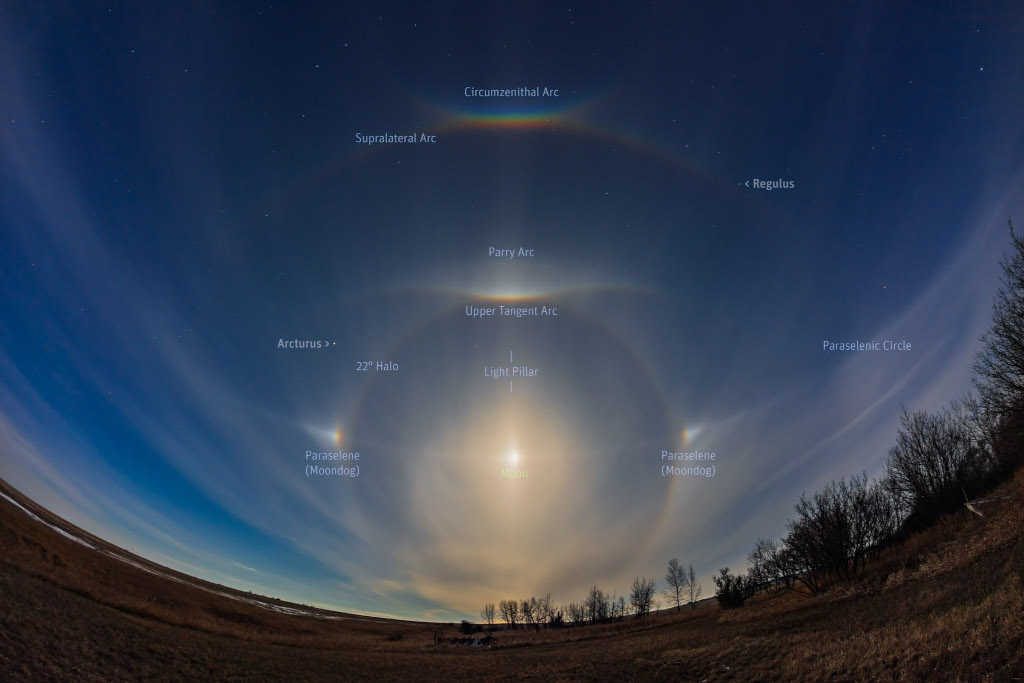
An almost full moon on April 15 brought these luminous apparitions to a northern spring night over Alberta Canada. On that night, bright moonlight refracted and reflected by hexagonal ice crystals in high clouds created a complex of halos and arcs more commonly seen by sunlight in daytime skies. While the colors of the arcs and moondogs or paraselenae were just visible to the unaided eye, a blend of exposures ranging from 30 seconds to 1/20 second was used to render this moonlit wide-angle skyscape. The Big Dipper at the top of the frame sits just above a smiling and rainbow-hued circumzenithal arc. With Arcturus left and Regulus toward the right the Moon is centered in its often spotted 22 degree halo. May 15 will also see the bright light of a Full Moon shining in Earth's night skies. Tomorrow's Full Moon will be dimmed for a while though, as it slides through Earth's shadow in a total lunar eclipse.
from NASA https://ift.tt/z1WC8DA
Comments
Post a Comment